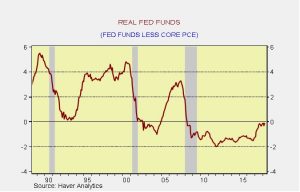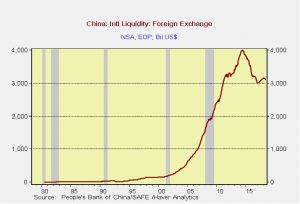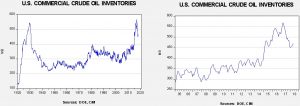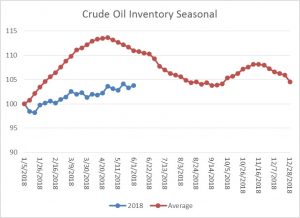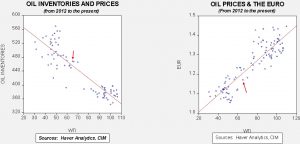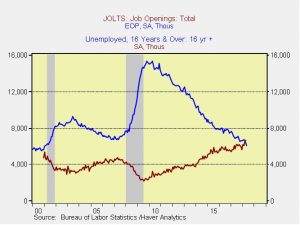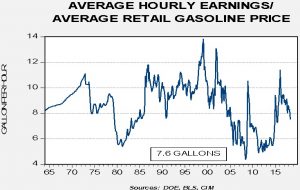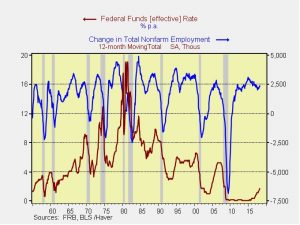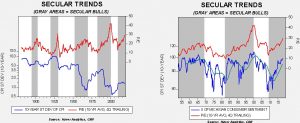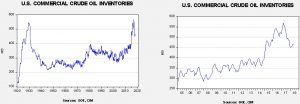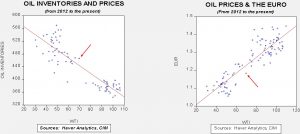by Bill O’Grady and Thomas Wash
[Posted: 9:30 AM EDT] Happy Friday! Equities dipped overnight but are recovering a bit as we head toward the opening bell. There is a lot of news. Let’s dig in:
G-7? Acrimony rules in front of the G-7 meeting. President Trump told reporters, “Russia should be allowed back in,” just at the moment when the group may be on the brink of irrelevance. To be completely fair, this group, which dominated the Free World during the Cold War, has become increasingly superfluous. It doesn’t include China and is dominated by Europe. This weekend’s meeting in Quebec may be important because historians could mark it as the official beginning of the end of U.S. hegemony, at least the version practiced after WWII. Ian Bremmer, the founder of the Eurasian Group, has argued for some time that we are heading toward a “G-0” world.[1] We have agreed with this assessment over the long term but that long-term outlook may now be upon us in this moment.
The world wants the U.S. to provide free security and remain the global importer of last resort. In our opinion, the political turmoil seen in America since 2008 has been driven by the fact that the policies we need to take on as a hegemon to provide the global public goods are in conflict with domestic needs. President Obama had started down this path (“leading from behind”) and President Trump is accelerating this process. I heard a commentator on the radio suggest that we were creating a power vacuum that “China will be willing to fill.” Only if…a much more likely outcome is that no nation will step up to fulfill the hegemonic role and the world will devolve into regional blocs that conflict with each other and have wars within some of the blocs.
We look for a very difficult meeting,[2] with the non-U.S. members of the G-7 lashing out at the U.S. in a fashion similar to teenagers when the parents take away the smartphone. The other members of the G-7 have taken the global public goods provided by the U.S. as the natural order. That order is coming to an end.
Brexit: PM May has been trying to negotiate the U.K.’s exit from the EU in such a way that it placates the “hard” Brexit supporters who want a complete break and also maintains enough ties so that the economy doesn’t stall from the loss of trade.[3] One of the critical pieces is how to avoid a hard border returning to the Ireland/Northern Ireland frontier. May is trying to fashion a short-term arrangement where the customs union will exist on the frontier that will effectively become never-ending. David Davis, who is in charge of Brexit, will have nothing of it; he wants a drop-dead date when the customs union ends.[4] At the other end of the negotiations is the EU’s chief negotiator, Michel Barnier, who indicated today that any arrangement to avoid a hard border on the Irish Isles can’t be used to put the entire U.K. in the customs union.[5] His position does put May’s plan in serious jeopardy. The GBP slipped on his comments.
Politically, this situation is dicey. May only holds the PM role because she has a few MPs from the DUP, a small Northern Ireland Unionist party. If the hard Brexit supporters push too hard and trigger a no-confidence vote, they might lose power. Jeremy Corybn, the leader of Labour, has already indicated he supports a “soft Brexit” that would put the U.K. in the EU’s customs union. Current polls show the Tories are still more popular than Labour but would not carry a majority, meaning that Labour could put together a working coalition. A Corybn-led U.K. would put a scare into the financial markets; he is an unreconstructed socialist that would aim to return Britain to a post-WWII world where major industries were nationalized.
Turmoil in emerging markets (EM):Brazil is facing political turmoil and widespread transportation strikes. Turkey is raising rates rapidly to fend off a currency crisis. Argentina is struggling, although it did secure IMF funding.[6] Central bankers in India and Indonesia are warning the Federal Reserve that U.S. policy tightening is creating problems for their economies. In our opinion, the key issue is the dollar. Dollar strength is weighing on EM sentiment; in general, the relative performance of EM comes from currencies. Weak dollar periods favor EM. It appears the driving force behind recent dollar strength is policy divergence. The Fed is raising rates while the rest of the developed world is not, leading to dollar strength. However, another worry is that Trump’s developing trade policy will lead to dollar scarcity. We will be watching the FOMC statement at the June 12-13 meeting for any hints that the FOMC may pause. We are getting to a point in the tightening cycle when doves will become nervous. Once there is sign of a potential pause, we will know better if the dollar is being driven by monetary or trade policy.
[1] https://www.foreignaffairs.com/articles/2011-01-31/g-zero-world ; https://www.breakingviews.com/considered-view/g7-risks-becoming-g-zero-without-consensus/?SID=57436e5d498ecfca83d095fe&content_alert_status=Ready&utm_source=Sailthru&utm_medium=email&utm_campaign=G7%20summit%2C%20U.S.%20water%20M%26A%20Thu%2C%2007%20Jun%202018%2019:33%20bkellerman&utm_term=BV%20-%20Asia%2C%20EMEA%20and%20US%20Daily ; https://www.nytimes.com/2018/06/07/opinion/g7-europe-trump-macron-leadership.html?rref=collection%2Fsectioncollection%2Fopinion&action=click&contentCollection=opinion®ion=rank&module=package&version=highlights&contentPlacement=5&pgtype=sectionfront&wpmm=1&wpisrc=nl_todayworld
[2] https://www.politico.com/story/2018/06/07/trump-g7-trudeau-macron-632988 and https://www.washingtonpost.com/business/economy/trump-plans-confrontational-approach-with-world-leaders-at-economic-summit/2018/06/06/78291868-68ea-11e8-9e38-24e693b38637_story.html?noredirect=on&utm_term=.fe11ffedfd46&wpisrc=nl_todayworld&wpmm=1
[3] https://www.politico.eu/article/brexit-northern-ireland-theresa-may-staggers-over-the-line-with-plan/?utm_source=POLITICO.EU&utm_campaign=72f5b6ae65-EMAIL_CAMPAIGN_2018_06_08_04_39&utm_medium=email&utm_term=0_10959edeb5-72f5b6ae65-190334489 and https://www.ft.com/content/5ace73e8-6a58-11e8-b6eb-4acfcfb08c11?emailId=5b1a0c86f9a0850004934bef&segmentId=22011ee7-896a-8c4c-22a0-7603348b7f22
[4] https://www.ft.com/content/38f6a1e6-6a67-11e8-8cf3-0c230fa67aec?emailId=5b1a0c86f9a0850004934bef&segmentId=22011ee7-896a-8c4c-22a0-7603348b7f22
[5] https://www.reuters.com/article/us-britain-eu-barnier/irish-border-backstop-fix-cannot-be-for-whole-of-uk-eus-barnier-idUSKCN1J41S2
[6] https://www.ft.com/content/cf13acba-6aa2-11e8-b6eb-4acfcfb08c11?emailId=5b1a0c86f9a0850004934bef&segmentId=22011ee7-896a-8c4c-22a0-7603348b7f22 and https://www.ft.com/content/98b6f6fc-6ab3-11e8-8cf3-0c230fa67aec?emailId=5b1a0c86f9a0850004934bef&segmentId=22011ee7-896a-8c4c-22a0-7603348b7f22



